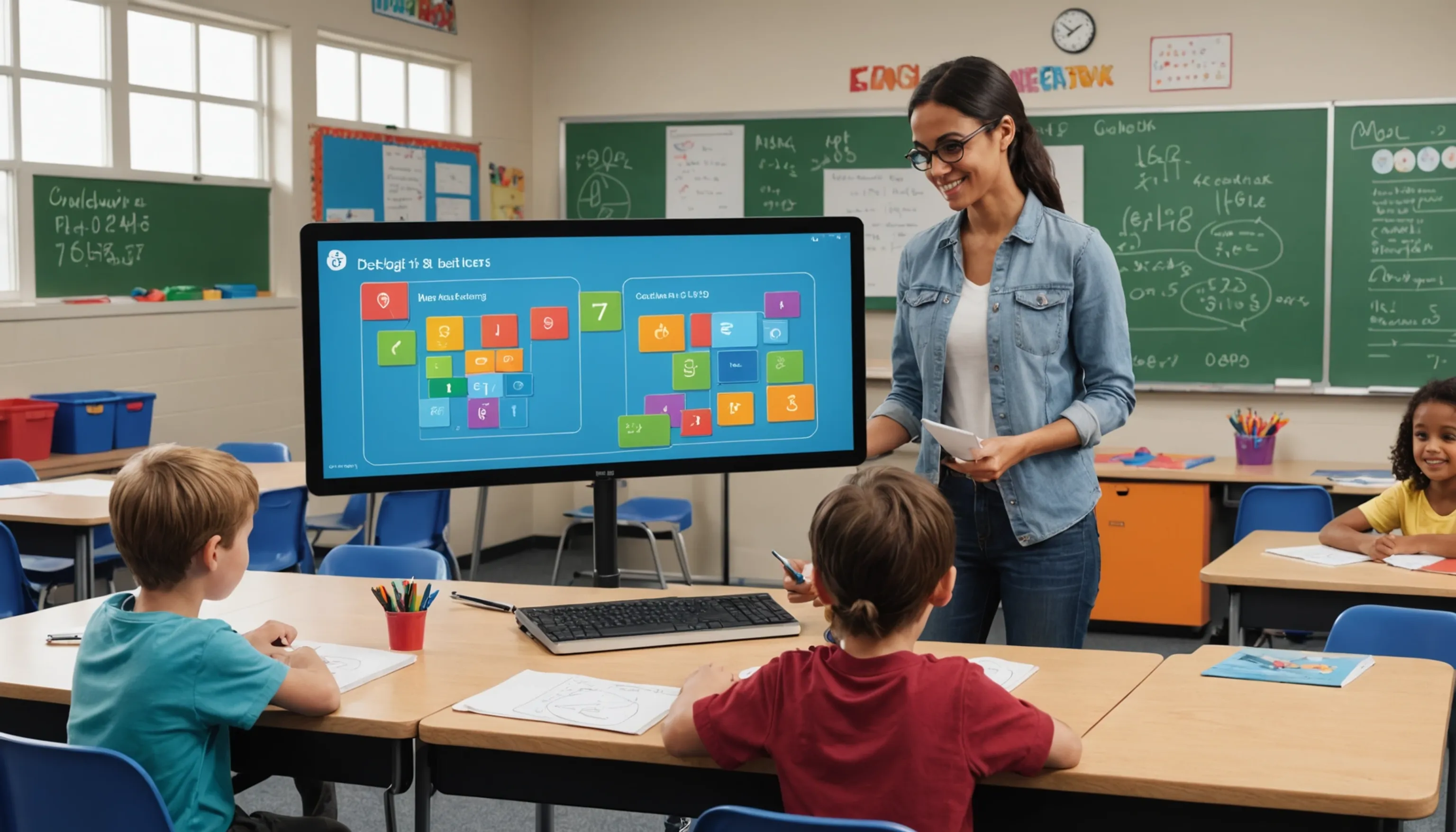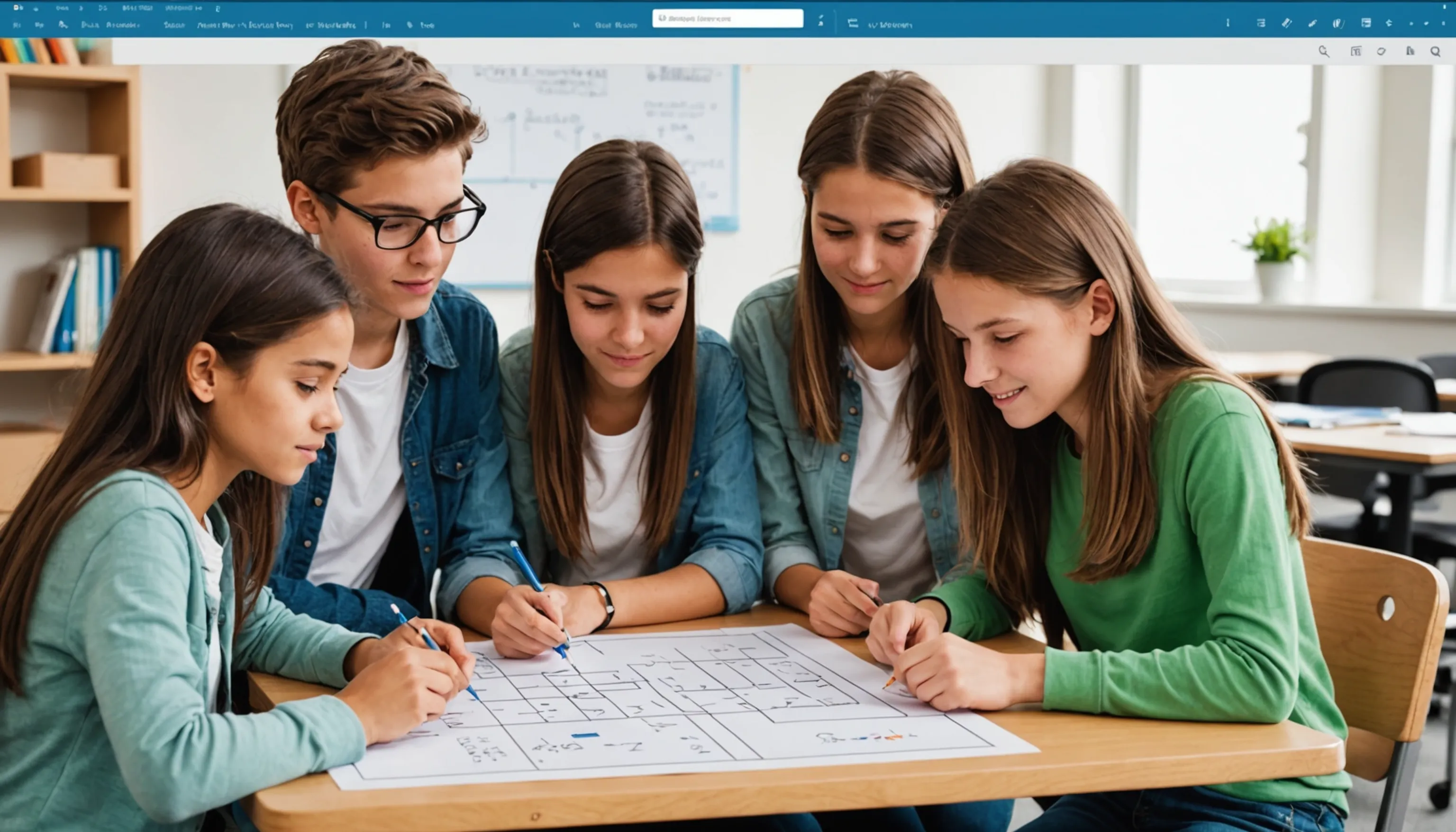New Kind of Base-Builder with Math
 HvWHenry van Wagenberg
HvWHenry van Wagenberg
Understanding the New Kind of Base-Builder with Math
The new kind of base-builder with math is designed to revolutionize how teenagers engage with mathematical concepts. This innovative tool integrates various teaching methods, making math more accessible and enjoyable. By focusing on foundational skills, it helps students build a strong base in mathematics.
Moreover, this base-builder adapts to individual learning styles, ensuring that each student can progress at their own pace. It encourages exploration and creativity in problem-solving, which is crucial for developing critical thinking skills in today’s fast-paced world.
What is a Base-Builder in Math?
A base-builder in math is a specialized educational tool designed to help students grasp fundamental mathematical concepts. It serves as a foundation for more complex topics, ensuring that learners develop a solid understanding before advancing. Traditionally, students often struggle with math because they miss essential building blocks, which can lead to frustration and disengagement. The base-builder addresses this issue by focusing on core skills such as arithmetic, fractions, and basic algebra.
What sets the new base-builder apart is its interactive approach. Unlike traditional methods that rely heavily on rote memorization, this tool uses engaging activities and real-world applications to demonstrate mathematical principles. For instance, students might use visual aids, games, or digital platforms that encourage hands-on learning. By making math relatable, students can see the practical applications of what they are learning, which enhances motivation.
Moreover, the base-builder adapts to different learning styles, catering to visual, auditory, and kinesthetic learners. This flexibility is crucial as it allows each student to engage with the material in a way that resonates with them. Additionally, teachers can track progress and identify areas needing more focus, facilitating personalized instruction.
In summary, a base-builder in math is not just a learning aid; it is a comprehensive approach to building mathematical understanding. By emphasizing foundational skills, it prepares teenagers for more advanced mathematical challenges while fostering a positive attitude toward learning.

Key Features of the New Base-Builder
The new base-builder in math comes with several key features designed to enhance the learning experience for teenagers. One of the standout attributes is its interactive interface. Unlike traditional textbooks, the new base-builder utilizes engaging visuals and animations that make learning more appealing. This interactivity helps to maintain students' attention and encourages active participation in their learning journey.
Another significant feature is the adaptive learning technology. This technology customizes the content based on each student's progress and understanding. For example, if a student struggles with fractions, the base-builder will provide additional resources and practice problems focused on that area, ensuring they grasp the concept before moving on.
Furthermore, the new base-builder incorporates real-world applications. By connecting mathematical concepts to everyday situations, students can better appreciate the relevance of what they are learning. This practical approach not only enhances comprehension but also boosts motivation as students see how math applies to their lives.
Additionally, the base-builder supports collaborative learning. It often includes features that allow students to work together on problems or share solutions, fostering a sense of community and teamwork in the learning process. This collaboration can lead to deeper understanding, as students learn from one another.
In summary, the new base-builder is a comprehensive tool that combines interactivity, adaptability, real-world relevance, and collaboration to create an effective learning environment for teenagers.
How This Base-Builder Benefits Teenagers
The new base-builder offers numerous benefits for teenagers, primarily by enhancing their mathematical understanding. First, it promotes confidence as students master fundamental concepts, reducing anxiety around math. Second, the tool encourages engagement through interactive activities that make learning enjoyable. Additionally, it supports personalized learning, allowing teens to progress at their own pace and revisit challenging topics. This adaptability ensures that each student receives the attention they need to succeed. Finally, by incorporating real-world applications, the base-builder helps teenagers see the relevance of math in everyday life, further motivating them to learn.

Enhancing Problem-Solving Skills
One of the most significant advantages of the new base-builder is its ability to enhance problem-solving skills in teenagers. This tool not only focuses on teaching mathematical concepts but also emphasizes critical thinking and analytical abilities. By presenting a variety of problems that require students to apply their knowledge creatively, the base-builder encourages them to approach challenges from multiple angles.
For instance, the interactive platform often includes games and challenges that require students to devise strategies and solutions in real-time. This hands-on approach fosters a deeper understanding of mathematical principles and their applications. As teenagers engage with these problems, they learn to break down complex tasks into manageable steps, a skill that is valuable beyond math.
Moreover, the base-builder frequently incorporates collaborative exercises, where students work together to solve problems. This teamwork not only enhances their communication skills but also exposes them to different perspectives and methods of thinking. Learning to articulate their thought processes and reasoning improves their overall problem-solving abilities.
Additionally, the tool provides instant feedback on their approaches, allowing students to reflect on their strategies and make adjustments. This iterative process is crucial for developing resilience and adaptability, as they learn that mistakes are part of the learning journey.
In summary, by focusing on problem-solving skills, the new base-builder equips teenagers with the tools they need to tackle mathematical challenges confidently and prepares them for real-world situations where critical thinking is essential.
Making Math More Engaging
One of the primary goals of the new base-builder is to make math more engaging for teenagers. Traditional math education often struggles to capture students' interest, leading to a lack of motivation and enthusiasm. The base-builder addresses this issue by incorporating interactive elements that transform learning into an enjoyable experience.
For starters, the base-builder utilizes gamification techniques, turning mathematical concepts into fun challenges and competitions. By integrating game-like features, such as points, levels, and rewards, students are motivated to participate actively. This approach not only enhances engagement but also encourages a sense of achievement as they progress through various levels of difficulty.
Additionally, the platform often includes visual aids and interactive simulations that bring abstract concepts to life. For example, students can manipulate shapes, graphs, or equations in real-time, allowing them to see the immediate impact of their actions. This hands-on experience fosters curiosity and encourages exploration, making math feel less daunting.
The base-builder also connects mathematical concepts to real-world scenarios. By demonstrating how math applies to everyday life—such as budgeting, cooking, or sports—students can better appreciate its relevance. This practical application not only makes learning enjoyable but also helps students retain information longer.
In conclusion, the new base-builder effectively makes math more engaging for teenagers by using gamification, visual aids, and real-world connections, ultimately fostering a positive attitude towards learning mathematics.
Supporting Individual Learning Styles
The new base-builder is designed to support individual learning styles, recognizing that each teenager learns differently. By offering a variety of instructional methods—such as visual aids, interactive simulations, and auditory explanations—the tool caters to visual, auditory, and kinesthetic learners. This flexibility allows students to engage with the material in a way that resonates with them. Furthermore, the base-builder's adaptive learning technology personalizes the experience, adjusting the difficulty and content based on each student's progress. This tailored approach ensures that all learners can grasp mathematical concepts effectively, fostering a more inclusive educational environment.
Incorporating Technology into Learning
In today's digital age, incorporating technology into learning is essential for engaging teenagers, and the new base-builder exemplifies this integration. This innovative tool leverages various technological advancements to enhance the mathematical learning experience, making it more interactive and effective.
One key feature is the use of interactive software, which allows students to visualize complex mathematical concepts through dynamic simulations. For instance, they can manipulate variables in real-time to see how changes affect outcomes, fostering a deeper understanding of mathematical principles. This hands-on approach not only makes learning enjoyable but also encourages exploration and experimentation.
Furthermore, the base-builder often incorporates online resources such as videos, tutorials, and forums. These resources provide additional support and allow students to learn at their own pace. They can revisit challenging topics through engaging content, ensuring that they fully grasp the material before moving on.
Collaboration is another crucial aspect of technology integration. The base-builder typically includes features that facilitate group work, enabling students to collaborate on problems and share solutions via online platforms. This collaboration enhances communication skills and fosters a sense of community among learners.
Additionally, the tool often provides instant feedback on exercises, allowing students to identify areas for improvement quickly. This immediate response helps them adjust their strategies and reinforces learning.
In summary, by incorporating technology into learning, the new base-builder creates a rich educational experience that keeps teenagers engaged and enhances their understanding of mathematics.
Resources for Parents and Teachers
Parents and teachers play a crucial role in supporting teenagers' mathematical learning, and numerous resources are available to enhance this journey alongside the new base-builder. These resources can help maximize the effectiveness of the tool and ensure a comprehensive understanding of mathematics.
Here are some valuable resources:
- Online Tutorials: Websites like Khan Academy and Coursera offer free courses that cover a variety of mathematical topics, providing additional explanations and practice problems.
- Educational Apps: There are numerous apps designed to reinforce math skills through games and interactive activities. Apps like Prodigy Math and Photomath can complement the base-builder.
- Community Forums: Platforms such as Reddit or specialized educational forums allow parents and teachers to share experiences, strategies, and resources related to math education.
- Workshops and Webinars: Many organizations offer workshops for parents and teachers to learn effective methods for teaching math and supporting students. These sessions can provide insights into how to best utilize the base-builder.
- Books and Guides: There are many educational books that focus on math teaching strategies, learning styles, and problem-solving techniques. Titles like "The Art of Problem Solving" offer valuable insights.
By leveraging these resources, parents and teachers can create a supportive environment that enhances the effectiveness of the base-builder, ultimately helping teenagers develop a strong foundation in mathematics.
